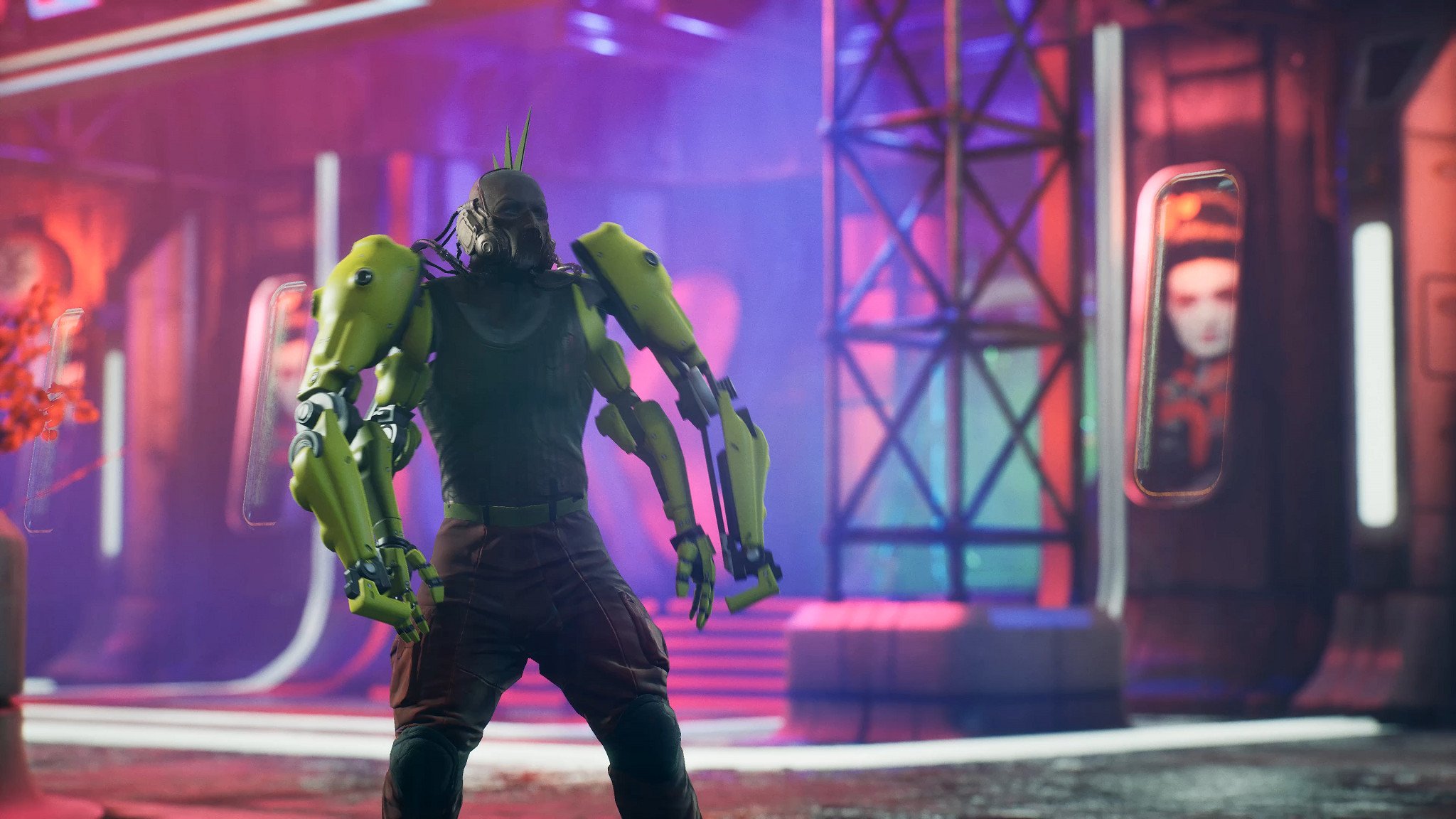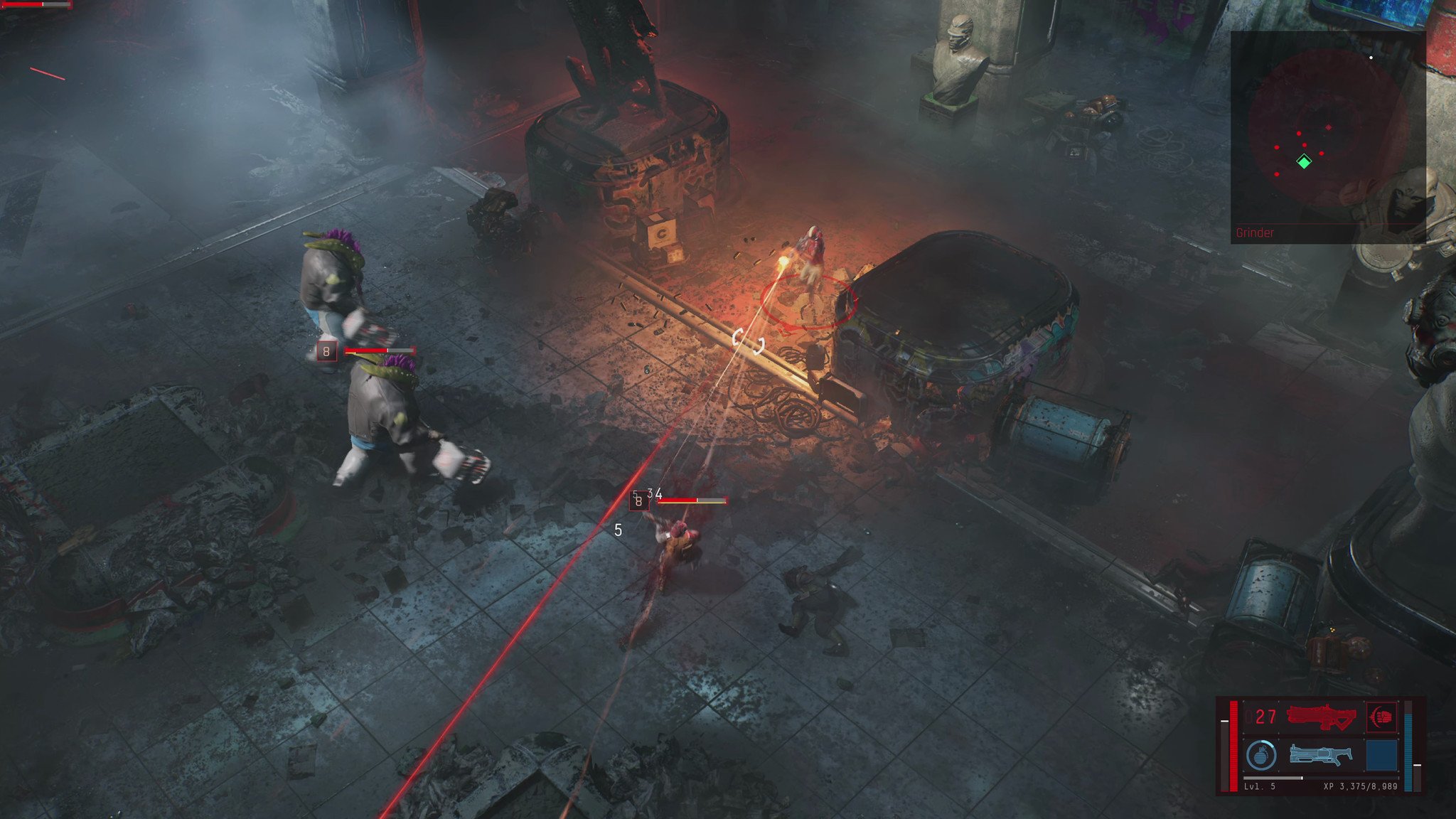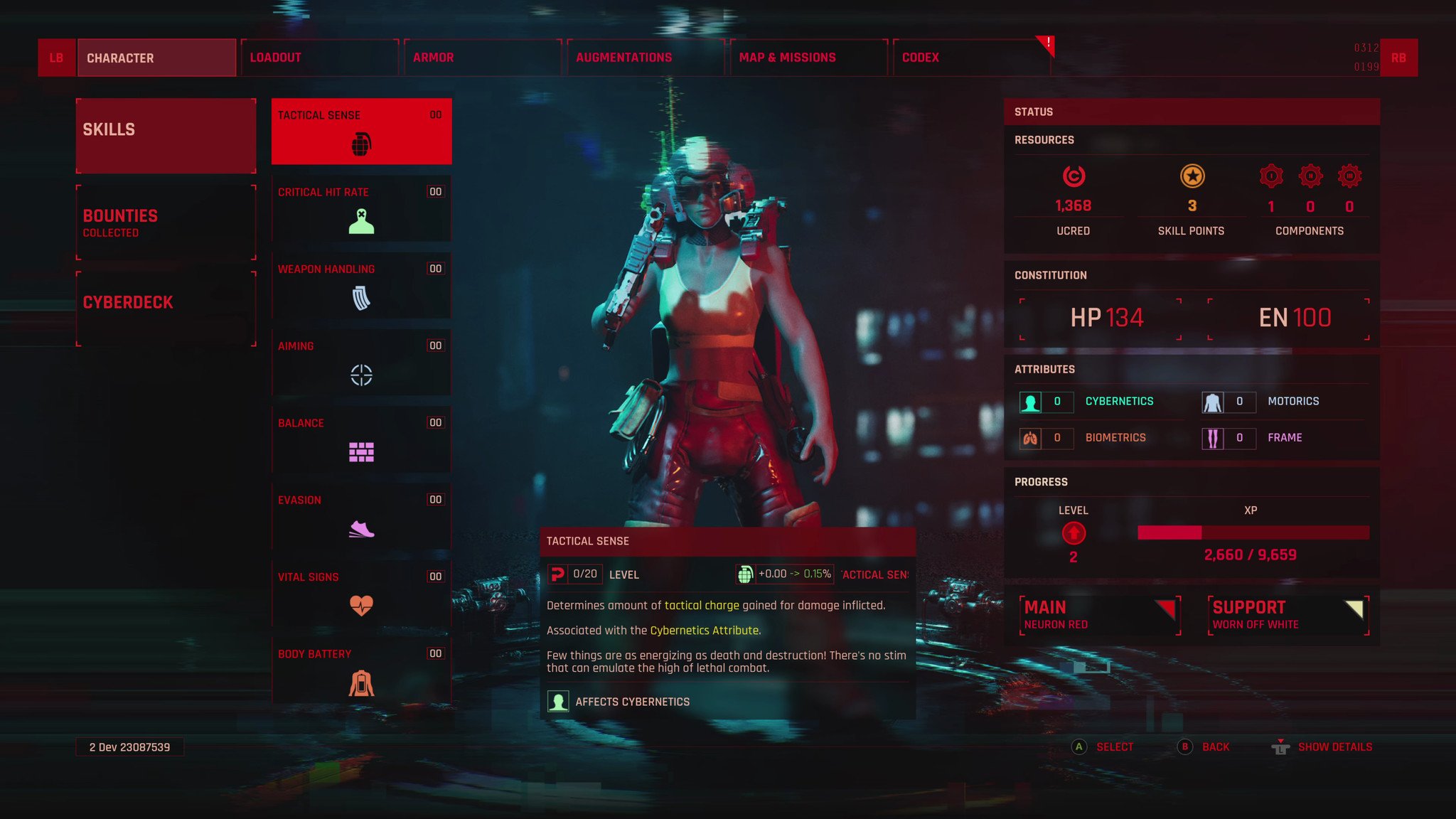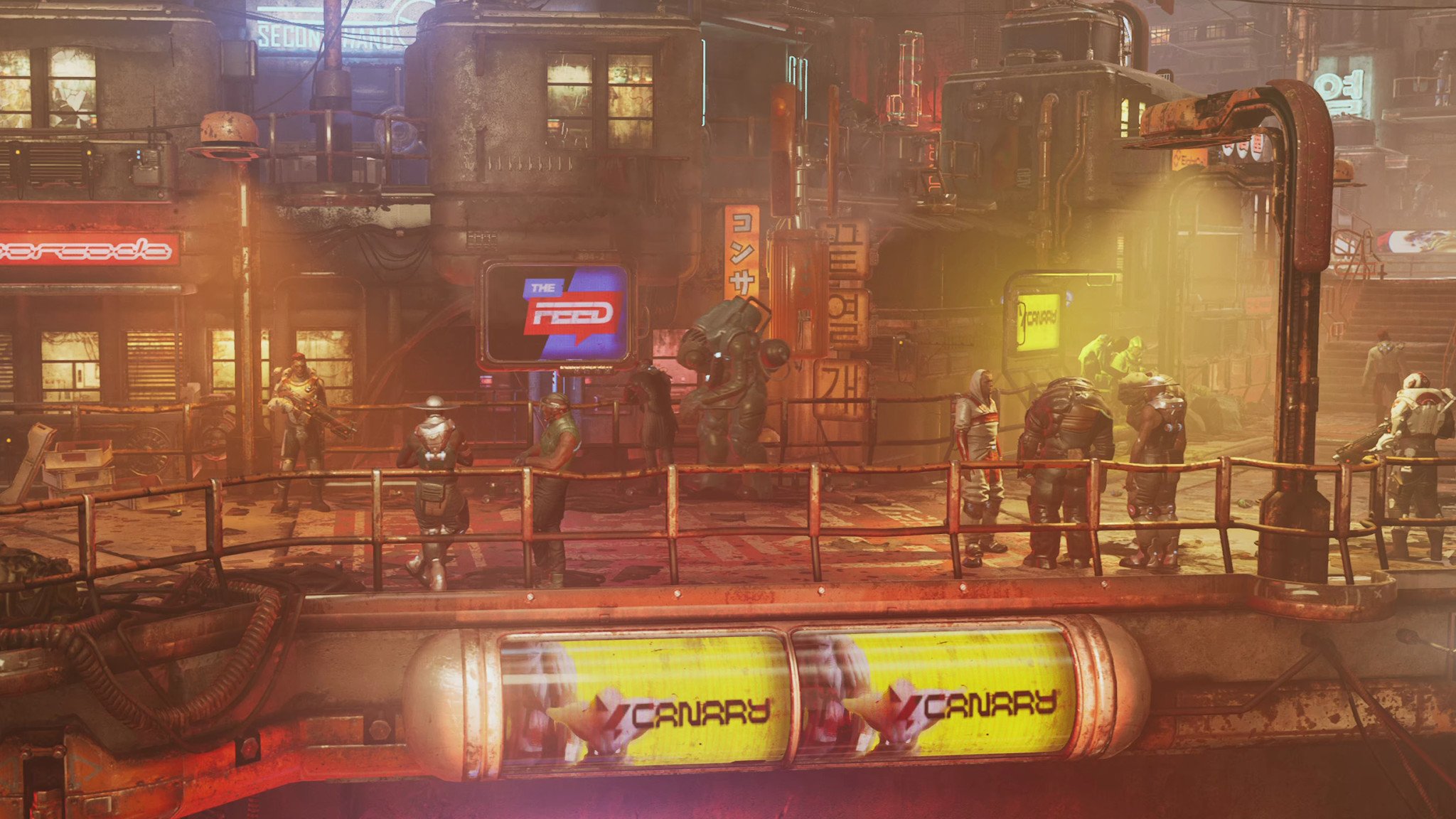Inside the technology and pipeline of this striking RPG.
Neon Giant's upcoming isometric role-playing game The Ascent takes place in a cyberpunk dystopia, a world of crime where the fall of a major corporation creates an immense power vacuum. The gameplay previews shown so far have been visually striking, and the 11 staff at the studio working to make a noticeable first impression. It seems like a lot of game for such a small studio, but that's an advantage they have.
"But we could never make something as big as the biggest studios. It's just not feasible, but we can make something that's good. And that's what we're trying to get across, that it doesn't matter how big or small you are," said Neon Giant co-founder Arcade Berg.
I had the chance to speak with Berg about how the team developed the upcoming title, including how it used Unreal Engine 4 features like ray tracing to enhance the art style, the perks of working as a smaller team, the challenge of working across multiple platforms, what everyone is looking forward to playing around with in Unreal Engine 5, and more.
Samuel Tolbert, Windows Central: Just starting things off, how long has Neon Giant been working on The Ascent?
Arcade Berg, Neon Giant co-founder: It's a layered answer. I would say three years. Back in April, we celebrated three years with the studio. And this is our first game. We started working on it day one, but it's been a roller coaster ride because we've also started a studio, we've built a team, you know, that whole thing.
Since this is the team's first game, why did you choose Unreal Engine 4 instead of another engine?
Berg: I'll go out on a limb and just say it's the best engine. A lot of us are a bit fanboy because, me personally and several of us, we have experience working at Epic [Games], you know, where the engine is actually made. So I was working on Unreal Engine 4 before it was even released to the public. So a lot of us come with experience from beforehand. Several of us have also shipped games on Unreal Engine 3, and obviously, a lot of that know-how carries with us and for us, it was never really even a discussion. We knew we were going to be on Unreal, we know that whatever we do next is going to be on Unreal, because that's where we know how to make games, basically.
The Ascent takes place in this cyberpunk world with some noir influence, with lots of neon lights, lots of very metallic surfaces. Did that art direction lend itself well to a lot of the features you're working on, like ray tracing?
Berg: Yeah, it's very much in our favor. My colleague and partner in crime Tor Frick, if you were to look at his history in art and as an art director, he has this art style regardless. So of course, we wanted to play with that and use that. When starting this game, we also wanted to play to our previous experiences, to know that we can deliver. So this was really just the obvious way for us. But yes, it does play really well with Unreal Engine, and it does play really well with newer technology, and next-gen and all that stuff. So luck maybe?
Ray tracing can be used in a couple of different ways. Can you talk more in-depth about what kind of ray tracing you're opting to implement in The Ascent and what that process has been like?
Berg: We always try to play with the new toys and we've been working with NVIDIA on playing with everything. They've actually helped us write code and optimizations and everything because, with our camera, we are not your typical game that uses ray tracing. A lot of it that you see out there is first-person, so we do a lot of things that weren't tested before. So together within NVIDIA, we've found solutions for that — mostly them to be honest — and we take them into our game with everything from distances to angles because it's not your typical first-person camera.
Are there any features in Unreal Engine that you wanted to take advantage of but you weren't able to for some reason or another, like it didn't fit with the design of the game or you just didn't have the staff power?
Berg: I'd say we did manage to use most of the stuff we wanted to use. Again, this comes from us actually having used the technology before because we moved over [from Epic Games] so we're using their new special effect tools, Niagara, instead of the old Cascade, I think we have some Cascade stuff in there still but we're definitely on the new tech there. We have a sweet bridge between Houdini, which is a tool that a lot of people use for procedural stuff from destruction, animation, smoke, and stuff like that. And that's the same thing we've gotten a lot of credit for from fans. I'm not sure if I should say fans because they haven't played yet, but from believers on YouTube, etc, is that they, really, really liked the destruction. And that's thanks to a very, very good workflow between Unreal, Unreal's physics, and Houdini and that whole thing is quite a sight to behold.
It doesn't matter how big or small you are.
And then obviously we've used a lot of blueprints, which is their visual scripting, which allows us non-coders — you don't want to pay me to program your game — to still create a lot of content and raw gameplay that's actually what you use in-game, you can take it way past prototyping. So I think we've been pretty good at using most of their toys and tools, I can't think of one that we wanted to use that we didn't. There are of course tools we didn't use because they just didn't fit what we're making. But this is always something we were keeping a keen eye on whenever there's an update, and we keep talking to the guys at Epic, saying 'Well, when this is out, we're definitely going to use this.'
Now, going back to Neon Giant itself, you're a very small team of 11 people. Was that ever a hindrance in developing the game? Or did you appreciate the tight focus that just having a very small group afforded you? Or is it perhaps somewhere in the middle?
Berg: I really appreciate the benefits because we're small by choice. It's easy to build a big team if that's what you really want. But for people that have followed us and the press, you're gonna hear me say 'it's slow to turn a big ship.' But it really is that because we can act and change and adapt so quickly. And part of what you were asking with the tools, the reason we can use the new toys is because we don't need to teach 50 people or 200 people how to use it. So we can be much more flexible there.
There are times, of course, when we say 'had we had an entire team for this feature, we could have done this.' And we always need to be very sensible in what we do. Because one of the reasons we keep saying that we're a small team is because we want people playing the game to also understand that we are not a 500-man team, we're not a 2,000-man team. We can compete in quality, not in scope. I think people will be amazed by how big the game is, how much content there is, and it's thanks to our people, of course, but also pipelines and how we actually create content. But we could never make something as big as the biggest studios. It's just not feasible, but we can make something that's good. And that's what we're trying to get across, that it doesn't matter how big or small you are.
You mentioned scope, let's talk about scope. The Ascent is coming to Xbox Series X and Xbox Series S, it's coming to Xbox One as well. And then Windows 10 PC, a wide range of hardware. What was balancing that across multiple platforms like?
Berg: That's definitely one of the toughest points because we wanted to make something modern and cool. So we are basically forcing the old Xbox to run a very new game, and it takes a lot of brute force. So there are definitely things we asked to pull back a bit. But the trick is that we can't pull back on anything that affects gameplay because we have cross-play. So if Xbox One wants to play with Series X, they need to have the same game, right? Even if we pull back on maybe some physics effects or something that only the Series X can afford, but that's just 'sexy, you can't have less enemies. It's like 'On my screen, there's eight!' or 'Oh, really? I only have two,' we can't do that and that's the challenge.
That's a lot of what we're working on. Now, close to release, how much can we bring up the lower end? Because it also runs on very, very humble PCs, but it's just completely different architecture between PC and consoles.
Was getting cross-play running difficult or was that fairly simple to get people playing together?
Berg: Getting it running, it was actually easy. I'll give credit to Xbox for that. Because that's something they provide in their software. And the challenge is the optimizations and making sure that you can play on parity that we're playing the same game, even if mine is maybe a bit sexier because I have a beast of a machine.
Obviously, you're working in Unreal Engine 4 right now. But Unreal Engine 5 is right around the corner. A lot of studios have their hands on it and are playing around with it. Is there anything in Unreal Engine 5 that you're looking forward to in the future?
Berg: Yeah, a ton. The Nanite stuff with basically infinite polygons? It's just mind-boggling. I'm not an artist so I shouldn't comment too much on that, but that definitely changed the landscape. But also they have a bunch of new tools because we've been opening it up, just playing around a bit. They have in-engine modeling tools that you can bend meshes inside the engine.
"I want to see people being surprised that, to rip off Transformers, it's more than meets the eye.
So it's this concept, you might have heard of gray boxing, when you're just playing with very primitive shapes, you can take that to a whole new level. Today and previously, it's been fairly rudimentary; it's been cylinders, spheres, and boxes, then you scale them and you can draw. You can make doors and door frames and stairs and everything. But now you can twist and turn, I think we'll see a lot more organic layouts in the prototyping and gray box interfaces. So something players won't see because they don't see the game three years ago.
But development-wise, if we have more powerful tools while we're figuring everything out, that should be able to help us make a better experience in the end, right? Because in some games, you can definitely see that what was once a gray box now has an arch. Hopefully, you won't see that with The Ascent because we didn't build it that way. But you can actually see that and I think there will be much less of that. It's tools that are so easy to use. So you don't need these specialists to come in — everyone can have a play.
What advice would you be giving to new teams who are on the fence and thinking about using Unreal Engine? What would be your advice to them in getting started?
Berg: Do it. Don't be afraid, I think if anything, especially when it comes to people that have decided to make a game but they haven't decided what engine (and there are, of course, competitors out there). I think something that might scare some people is that 'oh, but Unreal and Unreal Engine and Epic, it's so huge. It was Mass Effect and Gears of War and Unreal Tournament, it's just massive games by massive people and of course they have 100 programmers...' Yeah, you don't need that, especially with Unreal 4; Unreal 3 was a bit trickier.
Unreal 5 is probably making it even easier, but it is much more welcoming than you might at first anticipate. And you can do a lot without having that full team in every aspect. There's also — and now I just sound like an Unreal Engine poster boy — there's a ton of tutorials. There's a ton of Discord channels, forums, there's so much material out there. So like you don't really have any excuse to not just take the leap.
So when The Ascent launches, what are you most looking forward to seeing players experience in this world?
Berg: I want to see people being surprised that, to rip off Transformers, it's more than meets the eye. Because the art is amazing (and I can say that because I didn't make it) and people will be blown away by that. But they know that coming in, if they watch a trailer, it's going to be a good-looking game. They know it's going to have explosions... But I hope that when they get to play it and have that whole thing, it's all, 'this all adds up to something I did not get from the trailer. It didn't come through in the articles or the reviews, but there's a world here for me to explore.'
This interview has been edited and condensed for clarity.
The Ascent is currently set to launch on July 29, 2021. It'll be available on Xbox Series X, Xbox Series S, Xbox, and PC and is included in Xbox Game Pass at launch.
Pre-order now
The Ascent
Gorgeous and great to play
This cyberpunk game takes place on the planet of Veles, and is looking to be quite spectacular with tough but fair combat and absolutely stunning visuals.
 Reviewed by admin
on
July 15, 2021
Rating:
Reviewed by admin
on
July 15, 2021
Rating:





No comments: